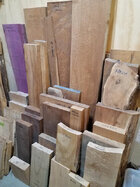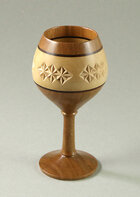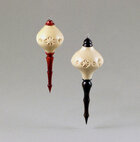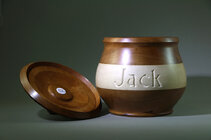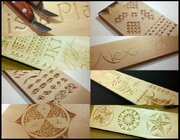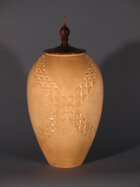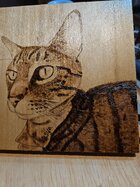I have a lot of 16/4, 12/4, and 8/4 walnut lumber in 5 to 8” widths that was kiln dried. If I cut them up into bowl or spindle blanks what would be a reasonable price selling price? I could even cut to order at no charge or cut up a batch to sell.
Should it be priced per board foot or by the piece? A 6x6x4 bowl blank is 2 board feet but companies that sell blanks command a premium for larger thicker blanks which makes me wonder what is the best way to market.
For example, if you wanted a 6” x 6” x 4” bowl blank, what should the price be?
It's hard for me to tell you how much you should charge, but I can tell you what interests me as a purchaser.
First, I absolutely want a square blank. If the blank has already been "rounded", I am not a buyer. I am going to use the corners in my turning. You might offer rounding as an option.
I look at the turning blank and it's price. I don't think I've ever thought about how many board feet in the blank. Still the board foot price gives you some starting point to valuation. And of course you have to consider your costs.
I pretty much always turn dry wood, and wood blanks that are very thick. So the 16/4 is interesting to me. Someone who turns wet wood or at least does not restrict their turning to dry wood may be less interested.
Because I want thick dry wood and thick dry wood is hard to find a 6 x 6 x 16/4 blank is worth much more to me than one that is 8/4. Again, someone who turns a lot of platters, or "shorter" pieces isn't going to place a premium on a 16/4 block. If I'm looking at a blank that is dry and thicker than 16/4, the value to me goes up even more.
The other dimensions are also important. 6 x 6 is as small I would buy (really it needs to be more like 6 1/4 x 6 1/4 or a little better).
If the blank is not S4S than it's less valuable to me. I can deal with some irregularities, but can't really mill a small block of wood.
Is the blank clear and solid or are there knots and cracks. If not, I may pass.
Centered grain. Less important to me since I never see it, but if the grain is centered this should add some value.
An 8 x 8 x 16/4 blank would be worth more to me, of course.
Of course, I don't represent the entire marketplace.


